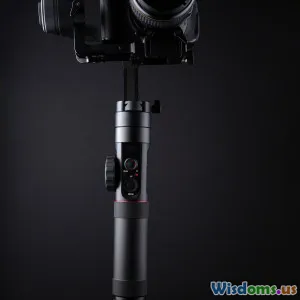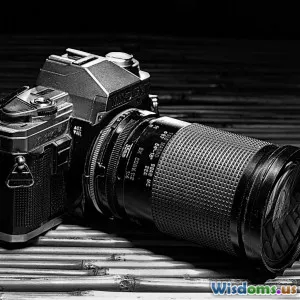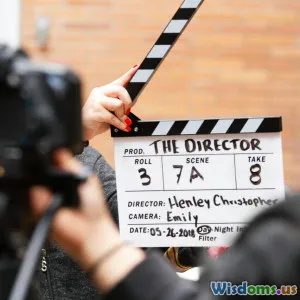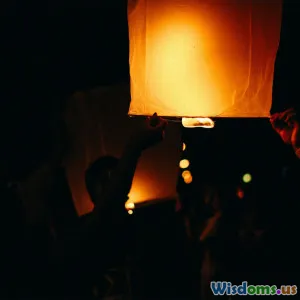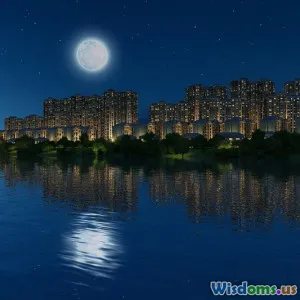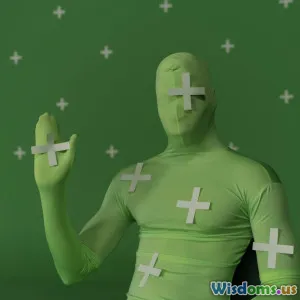
Predicting Future VFX Trends in Animated Feature Films
10 min read Explore groundbreaking VFX trends shaping the future of animated feature films with expert insights and cutting-edge technology forecasts. (0 Reviews)
Predicting Future VFX Trends in Animated Feature Films
Animation has long enchanted audiences with its ability to weave fantastical stories that blur the line between imagination and reality. Central to this magic is Visual Effects (VFX), which continue to evolve at a breakneck pace, shaping how animated feature films tell their tales. As we look forward, a fascinating shift is unfolding that promises to redefine the future of animation — a confluence of groundbreaking technologies, artistic reinterpretations, and novel production methodologies.
In this article, we will take a deep dive into the VFX trends poised to transform animated feature films in the coming years. From leveraging artificial intelligence to the rising tide of real-time rendering and volumetric capture, we'll explore how these innovations are set to unlock new creative horizons and streamline production.
The Current Landscape of VFX in Animation
Before forecasting the future, it’s pivotal to understand the current state of VFX in animated films. Popular titles such as Spider-Man: Into the Spider-Verse (2018) set new artistic standards by integrating comic-book aesthetics with 3D animation, pushing VFX beyond realistic visuals into an expressive art form. The use of physically accurate lighting, particle effects, and complex shaders showcased animation’s potential to deliver immersive experiences.
Studios like Pixar and DreamWorks continue to refine photorealistic rendering and intricate character simulations, setting a high bar for technical finesse. Yet, even with advanced 3D modeling, texturing, and compositing, challenges persist in balancing production timelines, budgets, and preserving artistic intent.
Emerging VFX Technologies Driving the Future
1. Artificial Intelligence and Machine Learning Integration
Artificial Intelligence (AI) is revolutionizing visual effects across media, and animation is no exception. In the future, AI-powered tools will become integral to VFX workflows, enabling:
- Automated Animation Generation: Techniques like deep learning-driven keyframe prediction and motion synthesis will accelerate character animation, cutting down manual labor significantly.
- Procedural Effects: Machine learning models can generate realistic environmental effects (rain, fire, smoke) by learning from real-world data, providing unprecedented realism with less manual input.
- Style Transfer and Artistic Augmentation: AI-enhanced style transfer tools allow studios to experiment with diverse artistic styles in real-time, pushing creative versatility. For example, NVIDIA’s AI tools have demonstrated the ability to instantly convert film footage into cartoon-like frames or painterly aesthetics.
Example: Walt Disney Animation Studios has been experimenting with GANs (Generative Adversarial Networks) to improve facial animation and expression nuances, enhancing emotional storytelling in animated characters.
2. Real-Time Rendering and Game Engine Adoption
The demand for speed and interactivity has deeply influenced animation production. Real-time rendering, originally nurtured within the video game sector, is now a game-changer for VFX in animation.
- Unreal Engine and Unity: These engines offer photorealistic lighting with ray-tracing, global illumination, and complex simulations. Their adoption allows artists to get immediate feedback on effects, dramatically shortening revision cycles.
- Virtual Production Pipelines: Real-time rendering enables virtual sets and pre-visualization during animation creation, fostering collaborative creativity and dynamic experimentation.
Real-World Insight: The recent animated film The Jungle Book (2016) used real-time game engine technologies during production to route scenes and lighting setups. As these pipelines mature, future animations will empower creatives to iterate at the speed of thought.
3. Volumetric Capture and 3D Scanning
Advancements in volumetric video capture and high-fidelity 3D scanning are bridging the gap between live-action realism and animation.
- This technology captures human performances or physical objects fully in 3D space, enabling animators to incorporate lifelike motions and textures directly into animated characters or environments.
- It provides rich reference data for complex VFX sequences and can be integrated with AI for facial performance retargeting.
Case Study: Industrial Light & Magic employed volumetric capture in The Mandalorian to create immersive environments; similar techniques are gaining traction in animation to augment character authenticity.
Shifting Aesthetics and Storytelling through VFX
Enhanced Realism vs Stylization
While technical advancements enable photorealism, there is a creative tension: many filmmakers aim for unique, stylized visuals that distinguish their work rather than mere replication of reality.
This trend encourages hybrid aesthetics — melding hyperreal textures with surreal, hand-crafted visual motifs. VFX tools will become more customizable, enabling bespoke visual narratives.
Example: Klaus (2019) employed volumetric lighting and meticulous texture work to create a hand-drawn look enriched with 3D lighting, representing a hybrid visual style achieved through advanced VFX.
Immersive and Interactive Storytelling Experiences
With augmented reality (AR), virtual reality (VR), and mixed reality (MR) gaining ground, animated features may extend beyond traditional screens.
Visual effects technologies will support immersive narratives where viewers participate or influence the storyline, promoting deeper emotional engagement.
Environmental and Procedural Animation
The future will see increased use of procedural generation powered by AI and VFX to simulate expansive worlds dynamically. This capability reduces manual asset creation, enabling massive open-world animated settings that feel alive and reactive.
Production Workflow Innovations
Cloud-Based Collaboration
Productions are increasingly leveraging cloud platforms that enable artists worldwide to collaborate on complex VFX tasks in real-time, speeding up workflows and reducing costs.
This also democratizes high-quality VFX, giving smaller studios access to powerful computational resources.
AI-Assisted Post-Processing
Automated color grading, compositing, and error detection powered by AI will streamline post-production phases.
For instance, AI can identify inconsistent shadows or color mismatches that humans might overlook, ensuring polished output with less time.
Sustainability in VFX Production
As awareness about environmental impact grows, VFX pipelines incorporating energy-efficient rendering and resource optimization will become standard.
Rendering farms are exploring green energy sources and optimized algorithms to minimize electricity consumption without compromising quality.
Challenges and Ethical Considerations
As AI and deep learning become more prevalent, ethical questions arise regarding creative authorship and data privacy. Studios will need transparent policies on AI-generated content and the use of scanned performance data.
Moreover, reliance on real-time engines demands re-skilling artists, potentially disrupting traditional roles. Balancing technology with human creativity remains an ongoing challenge.
Conclusion: Embracing a New Era in Animated VFX
Predicting future VFX trends in animated feature films reveals an exciting horizon where technology and artistry converge like never before. Artificial intelligence, real-time rendering, volumetric capture, and novel aesthetics will redefine animation's creative and production landscapes.
Through these innovations, stories will become more immersive, emotionally resonant, and visually stunning. Production efficiencies promise greater access and democratization of high-quality animation.
For artists, filmmakers, and studios willing to embrace these shifts, the future holds transformative potential — awakening limitless possibilities in the art of animated storytelling.
The dawn of a new VFX era beckons us to imagine not just what animation looks like, but what stories it can truly tell.
Take Action: Stay curious, explore emerging VFX tools, and consider how these trends can elevate your creative vision. The future of animated cinema is being shaped today—are you ready to be part of it?
Rate the Post
User Reviews
Other posts in Artificial Intelligence
Popular Posts











